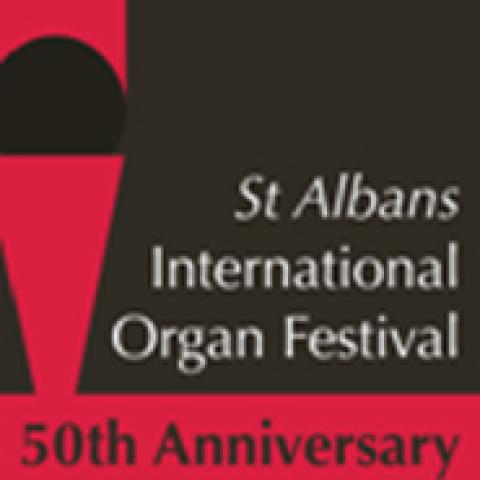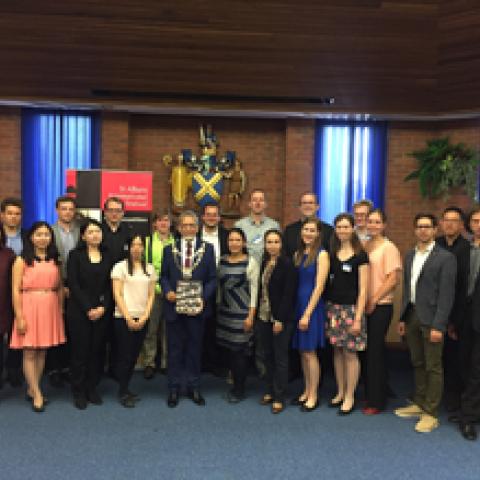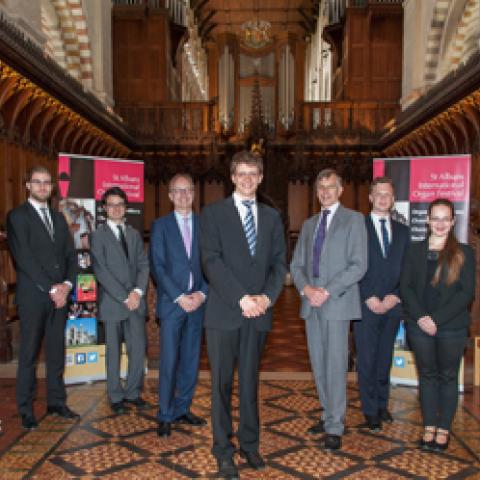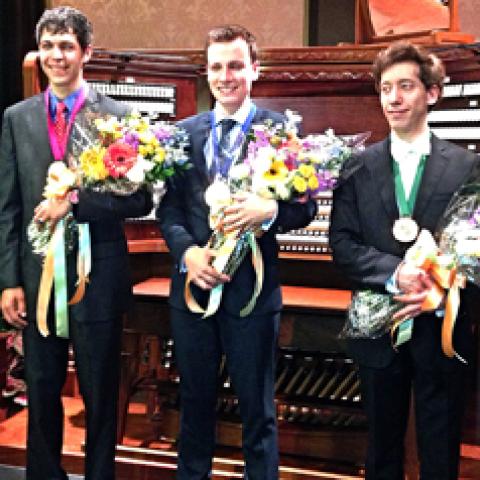
St. Albans Organ Competitions 2013 were held in July.
Simon Thomas Jacobs (UK) won first prize in the interpretation competition; a joint second prize was awarded to Anna-Victoria Baltrusch (Germany) and Benjamin Sheen (UK); the Peter Hurford Prize was awarded to Jihoon Song (South Korea), and the Jon Laukvik Prize to Benjamin Sheen.
For improvisation, the Tournemire Prize was awarded to Martin Sturm (Germany), the Douglas May Award to David Cassan (France), and the audience prize to Simon Thomas Jacobs. Shown in the photo are Jihoon Song, Martin Sturm, Simon Thomas Jacobs, Annie Brewster (Mayor of St. Albans), Anna-Victoria Baltrusch, and Benjamin Sheen.






